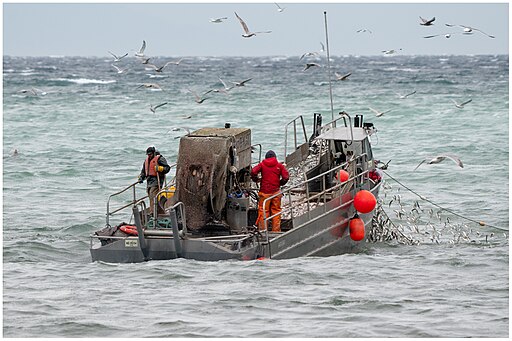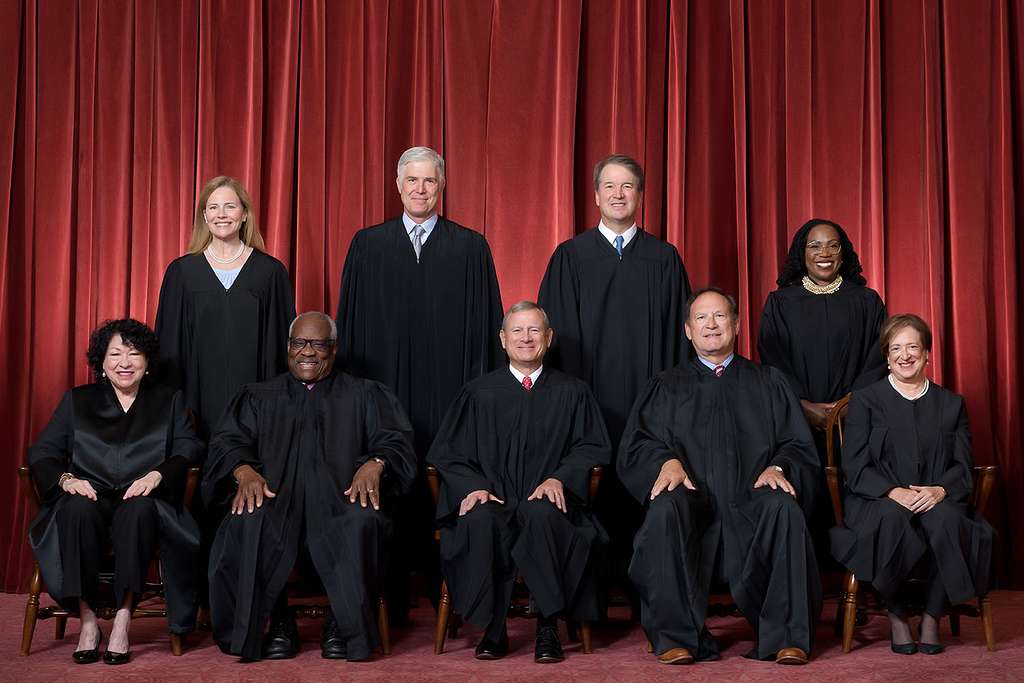PennFuture Blog
Our Perspectives on the Latest Issues
On June 28, 2024, the United States Supreme Court issued a decision in Loper Bright Enterprises v. Raimando, 603 U.S. ___ (2024), overturning the long-standing precedent of Chevron v. NRDC from 1984. In response, PennFuture said that “Chevron has stood for the foundational idea that certain issues are technical, nuanced, and require high levels of expertise that are beyond the knowledge of an individual judge… the real-world impacts of this [Loper Bright] decision will be far-reaching and will result in harm to our communities, especially those most at risk, and our environment.” In this blog, PennFuture’s legal team will explain the history and context of the Chevron decision, explain the Loper Bright decision, and look at what this major change in the law means for environmental and human health protections in Pennsylvania.

Background
To understand the significance of the Chevron and Loper Bright decisions, let’s start with some background about the relationship between Congress and federal agencies. Congress’s primary responsibility is enacting federal laws called statutes. Many statutes—for instance, environmental laws such as the Clean Air Act, Clean Water Act, and Endangered Species Act—address complex issues. Congress identifies broad concerns and generally directs how they should be addressed. Still, it typically lacks the time and expertise to put into a statute every detail about how to address the problem. Moreover, it doesn’t make sense for Congress to enshrine that level of detail in a statute when such details and the methods available to address those concerns or problems may change over time.
That’s where the federal agencies and regulations come in. Rather than attempting to address every aspect of, say, air pollution or securities fraud in a statute, Congress delegates that responsibility to the federal agency responsible for administering that statute. For example, when the Clean Air Act (CAA) was passed, Congress decided that air pollution should be controlled and that one of the ways to do that would be to require persons who create sources of air pollution to obtain permits. However, Congress did not exhaustively list all possible pollutants or get into the details to determine precisely how much of each pollutant each permittee should be allowed to emit. Instead, Congress directed the EPA to create regulations to cover these specifics within the parameters set out by the statute. This approach not only places the development of specific standards in the hands of experts, the “masters of the subject,” but it also allows agencies’ interpretations to shift over time (e.g., if a new pollutant is discovered or a new technology allows for greater pollution reduction) without requiring constant amendments to the statute.
While this approach makes sense, given the different roles and expertise levels of Congress and the various federal agencies, it can sometimes lead to disputes about whether an agency’s interpretation faithfully executes what Congress contemplated when enacting the statute. In Chevron, the Supreme Court provided a way to answer that question.
What was the Chevron decision, and how did it come about?
In the early 1970s, a group of corporate-backed “think tanks,” including the Heritage Foundation, American Enterprise Institute, the National Association of Manufacturers, and others, launched a campaign to restructure our government. These groups had a significant influence on Ronald Reagan’s policies, and when he became president in 1981, a seismic wave of deregulation began, reshaping the landscape of our government.
One small, seemingly insignificant footnote to this campaign was a rule change at the EPA, spearheaded by Reagan’s appointee as EPA Administrator, Anne Gorsuch.
While permitting requirements in the 1977 Clean Air Act Amendments required certain standards for “sources” that increased their emissions, the EPA under Gorsuch sought to limit the law’s applicability. It decided that a new or modified source, like a boiler or a furnace, could increase emissions without triggering these requirements, provided the facility where it was installed didn’t have a net increase in emissions. The Natural Resources Defense Council (NRDC) fought this decision all the way to the Supreme Court, and in 1984, the Gorsuch EPA won.
The Supreme Court ruled that if the language of an agency's enabling legislation (that is, the federal statute like the Clean Air Act in this case) is ambiguous, courts will defer to the agency's “reasonable” interpretation. Known to generations of law students as “the Chevron two-step,” it stood for the proposition that the professionals at administrative agencies, like the EPA, the Federal Aviation Administration (FAA), the Securities and Exchange Commission (SEC), and many others are better situated than the courts to understand and implement the complex laws passed by our Congress.
The “two-step” framework works like this:
- In step 1, the court reviewing the challenge to the agency regulation decides if the statute is ambiguous, meaning the court evaluates if Congress clearly directed the agency to do a specific thing or if it left open something for the agency to decide. If the court finds that the statute is unambiguous, then the agency must do what the statute unambiguously directs. If the court finds that the statute is ambiguous, the Court moves to step 2.
- In step 2, the court evaluates if the agency’s interpretation of the statute is reasonable. If the court finds that the agency’s interpretation is reasonable, then it defers to the agency. Even if the parties argue, for example, that the agency’s interpretation is a bad idea or represents a bad policy, the court will uphold the agency’s determination under the statute so long as it is a reasonable interpretation of the language Congress wrote. This is known as “Chevron deference.”
Forty Years of Chevron
While little notice was given when it was decided, Chevron would become a core foundation of administrative law, especially critical in environmental law, and one of the most-cited decisions ever. At first, the corporate interests that won in Chevron were happy to see the decision used to limit regulation. In 1985, a young attorney named Samuel Alito (yup, that Samuel Alito) even won a case on behalf of the Chemical Manufacturers Association that relied, in part, on Chevron. (Chemical Manufacturers Assoc. v. NRDC, 470 U.S. 116 (1985)). However, the embrace of Chevron by corporate interests didn’t last once it became clear that the “Chevron deference” could support the creation of needed rules just as easily as it had shepherded the Reagan-era deregulation. Many of the same interests that supported the deregulation that gave us Chevron began a new campaign to overrule the decision. Even Neil Gorsuch—yup, son of the Reagan EPA’s Anne Gorsuch, whose actions led to Chevron—railed against the powers it added to the “already titanic administrative state.” (Gutierrez-Brizuela v. Lynch, 834 F.3d 1142, 1155 (10th Cir. 2016) (Gorsuch, J., concurring)).

From herrings to judicial power: what happened in Loper Bright?
Alito and Gorsuch, after becoming Supreme Court Justices themselves, both joined with the other conservative justices in a 6-3 vote to overrule Chevron in Loper Bright. The case started as a seemingly minor dispute in which a herring fishing company did not want to pay the costs of required federal monitors assigned to their boats. But it became the backdrop for a larger dispute where the Supreme Court asserted its own authority, and that of the judicial branch, over that of the Executive branch’s administrative agencies.
A quick summary of the facts of the case that got us here: Loper Bright involves regulations passed by the National Marine Fisheries Service (NMFS), the federal agency responsible for conserving and maintaining the United States ocean resources, including fisheries. This authority comes from a statute called the Magnuson-Stevens Fishery Conservation and Management Act (MSA). To accomplish the MSA’s fishery conservation and management goals, NMFS requires certain fishing vessels to carry NMFS “observers” on board “for the purpose of collecting data necessary for the conservation and management of the fishery.” Certain of these vessels also must cover the costs of carrying the observers. Loper Bright Enterprises and other fishing companies challenged the regulation, saying it exceeded what Congress authorized the NMFS to do.
The Supreme Court took the case as the opportunity to revisit Chevron and what happens when Congress leaves ambiguity in a statute. The conservative majority decided that Chevron must be overruled because, it claimed, interpretation of statutes is solely the courts' responsibility. In the majority’s view, “agencies have no special competence in resolving statutory ambiguities,” and statutory interpretation should not be “fundamentally different just because an administrative interpretation is in play.” It claimed that Chevron’s “justifying presumption”—that agencies with the subject matter expertise are suited to interpret ambiguous statutes that they administer—was “a fiction.” Therefore, while courts may look to agencies’ interpretations of statutes for aid and guidance, they are not to defer to those interpretations.
(As for the question of the fishing vessels, the Court sent the case back to the lower courts to decide whether the MSA authorized the NMFS to require vessels to carry and pay for observers without giving deference to the NMFS’s interpretation.)
In her dissent, Justice Kagan paints a different picture when a choice must be made. “Who should give content to a statute when Congress’s instructions have run out?” she wrote, “Should it be a court? Or should it be the agency Congress has charged with administering the statute? The answer Chevron gives is that it should usually be the agency, within the bounds of reasonableness.”
Objecting to the majority’s theory that agencies have no special competence in resolving ambiguities, Justice Kagan goes on to explain why they are the best suited to do so:
“Some interpretive issues arising in the regulatory context involve scientific or technical subject matter. Agencies have expertise in those areas; courts do not. Some demand a detailed understanding of complex and interdependent regulatory programs. Agencies know those programs inside-out; again, courts do not. And some present policy choices, including trade-offs between competing goods. Agencies report to a President, who in turn answers to the public for his policy calls; courts have no such accountability and no proper basis for making policy. And of course Congress has conferred on that expert, experienced, and politically accountable agency the authority to administer—to make rules about and otherwise implement—the statute giving rise to the ambiguity or gap.”
However, Chief Justice Roberts, in his opinion, establishes a new standard that, should a court find that the language Congress wrote reasonably allows for more than one course of action, the path chosen by an agency must not only be reasonable but also the course of action that the court would have chosen. Roberts claims that to do otherwise violates the Administrative Procedures Act (APA) requirement that the court “decide all relevant questions of law.” But that justification is problematic. First, Chief Justice Roberts omitted the first part of that sentence, in which the APA says the courts should decide questions of law only “to the extent necessary.” Secondly, if this approach were actually required by the APA, there would have been no need for the court to invent the “major questions doctrine” which Roberts himself used in West Virginia v. EPA in 2022. (Under the major questions doctrine, courts may find that Congress did not delegate the power to address major political or economic issues to executive agencies, even if the statute's plain language appears to do just that.) Debates over regulatory language aside, if the language Congress wrote reasonably allows for more than one course of action, which of the reasonable alternatives to pick is a policy question, not a “question of law.” It’s not surprising court watchers have referred to Robert’s opinion in Loper Bright as “the biggest judicial power grab since 1803.”
Loper Bright and the Environment: What is in jeopardy?
Since 1984, courts have applied the Chevron doctrine in thousands of cases. While the Loper Bright ruling doesn’t automatically invalidate those prior decisions, it will likely spawn a wave of litigation that could conceivably affect all our administrative agencies, thus putting decades of environmental and health protections at risk. Even where agency action is ultimately upheld, the costs of such litigation could be substantial.
Rules related to environmental protection and our response to the climate crisis are particularly at risk in these challenges. In particular, there are two recent climate-related regulations that we’ve been tracking:
- In March of 2024, the Securities and Exchange Commission (SEC) approved new rules requiring companies to disclose material climate-related risks to investors.
- In April of 2024, the EPA issued New Source Performance Standards for carbon pollution from power plants.
Moreover, as we’ll discuss in another blog, the Supreme Court also just blew wide open the ability of entities to challenge seemingly “safe”, decades-old agency regulations under the APA. Coupled with Loper Bright, we must now be prepared for an onslaught of challenges to regulations that our communities have long relied upon for clean air and safe water.

What does it mean for Pennsylvania…
While the decision in Loper Bright is likely to significantly harm EPA’s ability to protect public health and the environment at the federal level, its effect on the Pennsylvania Department of Environmental Protection (DEP) is less direct.
Certainly, losing the backstop of strong federal regulations will create challenges for the DEP. The politics of enacting new regulations is much easier when the DEP implements a federal rule than when it acts on its own initiative. There are even restrictions in PA laws that prohibit the DEP, in certain specific cases, from enacting regulations more stringent than the minimum federal requirements without specific justification. Thus, should challenges under this new standard erode federal protections, DEP’s hands may be tied to maintain the status quo.
There are also cases, such as establishing motor vehicle emissions standards, where federal law prohibits PA from creating standards. In that case, we can choose between the federal and more protective California standards. In many cases, we follow the California standard, but those rules could face new challenges in states that may adopt the new Loper Bright standard of review for state agency actions.
There is a glimmer of good news regarding the deference our state courts give to DEP. The Pennsylvania Supreme Court recognized the principle of agency deference well before Chevron was decided in 1984. Since then, the Court has repeatedly cited Chevron to explain its decisions. The fact that the U.S. Supreme Court has changed its mind doesn’t necessarily mean our Supreme Court will agree. But we must remain vigilant.
Conclusion
Agencies will continue to enact regulations. And those regulations will continue to be subject to challenges both from those who believe them to be too burdensome and from those who believe them to be too weak. After Loper Bright, the question of whether those regulations will withstand challenge is now exclusively in the hands of whatever judge ends up hearing the challenge (which will certainly result in more “forum shopping” to get the “right” judge). We expect to see greater participation from experts and advocacy organizations in these challenges, as those on both sides attempt to persuade the judge of the correctness of their arguments. At PennFuture, our legal team will continue to push for strong federal and state regulations to protect our air and water and to continue to beat back against the ravages of climate change. We will help defend agency regulations that work towards these goals, and we will help challenge agency regulations that are not protective enough. We believe this power grab—taking away power from agencies and instead relocating it in the federal judiciary—is undemocratic and harmful. And you can count on us being there, even when things are stacked against us, to still fight for regulations that protect our health and our environment.
BLOG SEARCH
LATEST BLOG POSTS
TAG CLOUD
Get the Latest onOur PennFuture
Sign up for email updates on the latest news, events, and opportunities to make a difference.